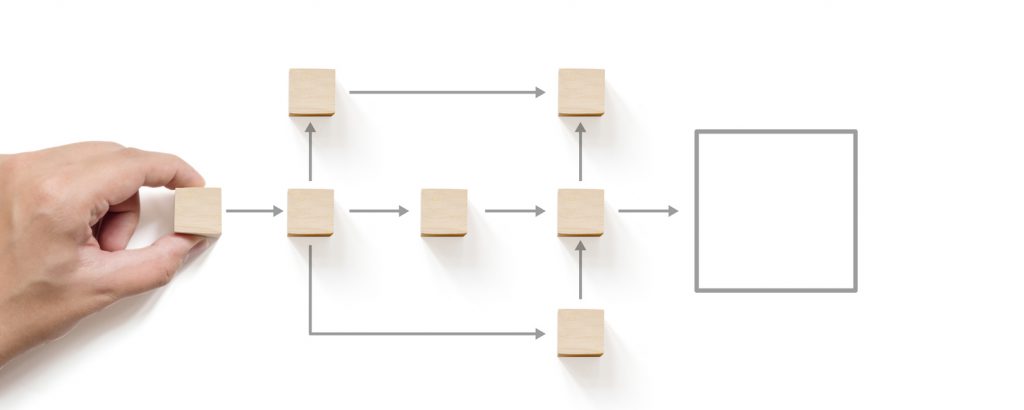Technical writing skills are essential for today’s facilities managers, who must produce a wide range of communications for a variety of readers. One day, you might be writing a CAPEX proposal for an executive, the next pinning a “how-to” memo for janitorial staff. So versatility and speed are prime requisites. Here are five technical writing tips that will improve the effectiveness and clarity of any written communication.
Tip 1: Fast-Track Your Audience Analysis
While some projects do require an in depth look at your audience, most FM technical writing can get by with evaluating a reader’s knowledge level of a subject. Use these three questions to fast-track your audience analysis and make your writing more targeted and concise.
What does my audience need to know?
This question delineates the key parts of your goal and states the desired outcome. The answer is usually one sentence, such as “To appropriately dispose of PPE” or “To understand the benefits of a third-floor remodel.” How well you answer this question determines your writing’s success or failure.
What do they already know?
Your audience’s attention and time is valuable, and you will lose both with superfluous information. Any steps, data or info your audience already brings to the writing should be jettisoned. Include information that’s “on the fence” within footnotes or at the end of your main document.
What do they not know?
Are there ideas or information you need to provide before your reader even begins the process of reading? Identify any assumptions you have about your audience’s experience, education and knowledge or else risk alienating them. For example, the goal of your writing may be “to explain the benefits of replacing the boiler system” but your assumption is that “every owner already knows the function of a boiler.” When in doubt, over-explain.
It’s obvious that the second and third questions are at cross purposes, and you must be vigilant in separating the “wheat from the chaff.” This is a good thing. The push and pull makes you an active writer, forcing you to constantly examine your information for relevance.

Tip 2: Use Active Voice
Writing in active voice is one of the most ubiquitous technical writing tips around, so it’s worth repeating. When you write in an active voice, you follow the standard sentence structure that puts the subject before the verb. This is opposed to passive voice. Here is an example of each:
- Active Voice: “We ask that all tenants follow the recycling protocols for paper waste.”
- Passive Voice: “We ask that recycling protocols for paper waste be followed by all tenants.”
In the above example, the subject (“tenants”) comes before the verb (“following”). In passive voice, the opposite occurs. So, what’s the big deal?
Well, active voice imbues your writing with confidence and presence; passive voice leaves it sounding flaccid and lifeless. Putting the subject after the verb also creates the sense that you’re trying to hide or downplay the actor of the action; it leaves a hint of insincerity and doubt in your tone. This is why committees and boards often deploy passive voice to mitigate responsibility for their decisions (“It was decided that…” rather than “The Board has decided that…”). Use an app like Grammarly and Hemingway App to identify and remove passive voice in your writing.
Tip 3: Add Graphics…Then Add More
One of the most effective writing tips isn’t about writing at all. Pictures really are worth a thousand words, and adding visual elements like tables, graphs, illustrations and photos improves your overall communication efforts. Graphic elements add dimension to your document’s layout and give a much needed break to monolithic walls of text. Much like a road-weary traveler, your reader needs the occasional “off-ramp” to rest and regroup—graphics are fit for purpose.
Some FMs find one barrier for using graphics: time commitment. While it does take some time investment to create graphics, today’s online apps significantly speed up the process. Bookmark these design tools in your browser and use them to churn out graphics for your next technical writing project or presentation :
- Canva—Online design app for creating presentations, posters, and graphs for free.
- Pexels—Free stock photos and videos.
- Adobe Spark—Create, design & download free pie, bar and line charts online
- MapChart—Create custom maps with color coding and legends
- Pixlr—Photo editor and template designer
Note: It’s certainly possible to use too many graphic elements, so be strategic. Like every word you write, each image in your layout should serve a function, whether explanatory or merely aesthetic.
Tip 4: Examples are Your Secret Weapon
Relevant examples distill a complex idea into something relatable and real. Plus, including examples in your technical writing forces you to consider real world implications for your information; it proves to the reader that you’ve considered the information or argument from a practical perspective, rather than merely a theoretical one.
For example, say you wanted to include after-hours AC charges in your standard commercial lease and wanted to make sure your tenants understood the process. After explaining your formula (Fixed Rate x Number of Operating Hours = AHAC Charges), you could include an example calculation:
- Tenant A uses 10 hours of after-hours air conditioning for the month of January, their total charge would be $75/hr x 10 hrs = $750. Tenant B uses 15 hrs for June. Their total AHAC charge would be $75/hr x 15 hrs = $1,125.
When including examples, use real world data and situations. If the above example reflected actual electrical usage rates for the property, it would communicate to tenants how much they should expect to pay.

Tip 5: Match Your Writing Structure to Your Purpose
Your writing purpose should, in large part, determine your structure. That is, let form follow function. Is your writing meant to inform, to persuade, to explain or do something else? For most FM writing, the goal is explanatory or informative. Here are several common writing structures to aid both types:
Steps-in-a-Process
Listing and explaining steps is an effective way to organise information for a process. Steps-in-a-process is appropriate for a short memo or “how-to” manual showing tenants how to sign onto an online portal. Step-by-step formats also work for longer, more complex processes when you group the steps. If your O&M manual contains 75 steps, chunk them into larger sections. Presenting steps in this way helps your audience conceptualize the larger process and aids memory, much like chunking a phone number into parts.
Hierarchy
Technical writers often organise informative pieces based on priority, typically moving from highest to lowest. Use introductory paragraphs and summaries to highlight key points, orient your reader and save them time. For legal documents like SLAs, start off by defining the most important concepts (e.g., “parties” or “description of services”) and end with the standard T&Cs. In contrast, moving from lowest to highest priority is effective for more persuasive writing. If you’re trying to justify an investment in CAFM or IWMS, for example, present your best reason at the end. It gives your argument an emotional punch.
Time
Time is an intuitive way for readers to understand information based on an order of events. Progress reports are the perfect project for a chronological framework. Most begin with past work completed, move to the present and then explain any future work to be done. Incident reports and disaster preparedness manuals are other candidates for a time-based framework because they guide readers through a series of events.
There is no one “correct” structure for any technical writing project. Your topic may not follow an A-to-B format or have priority points to make. Regardless, it’s essential you deliver on the purpose of your writing. Whatever meets that goal is the structure you should use.
Conclusion
Use these five technical writing tips as a starting point to improving your communication. And include this last tip: be patient. Few FMs has the time or patience to invest in becoming a better writer, so it’s critical to be realistic about your progress. Find opportunities during your day to practice. Rather than tackling all at once, master one of these writing tips at a time. Ten move on to another. An incremental approach improves your odds of sticking to it.

